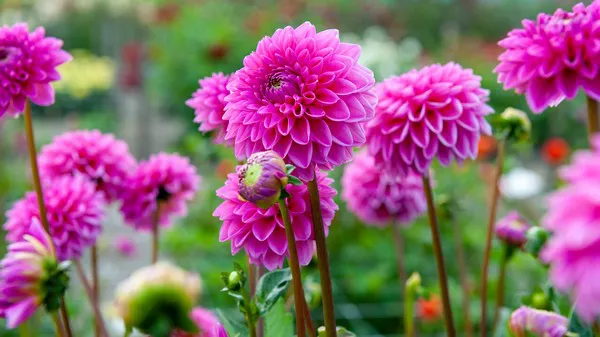The vibrant and charming purple coneflowers (Echinacea purpurea) have long been a favorite among garden enthusiasts and nature lovers alike. With their distinctive cone-shaped centers and striking purple petals, these native North American wildflowers are a true delight to behold. One common question that arises when cultivating these beauties is: How long do purple coneflowers actually bloom? In this comprehensive guide, we delve into the various factors influencing their blooming period, maintenance techniques to extend their flowering, and their ecological significance.
Understanding the Blooming Period
The blooming period of purple coneflowers typically spans from early summer to mid-fall, encompassing several months of vibrant floral display. This extended blooming duration is a significant factor contributing to their popularity in gardens and landscapes. The exact timing of blooming, however, can vary based on several factors, including geographical location, climate conditions, and specific cultivars.
Influential Factors on Blooming Period
1. Geographic Location
Purple coneflowers are found across a wide range of North American regions, from the eastern United States to the central plains and beyond. The blooming period can be influenced by the length of the growing season in these different areas. Generally, regions with longer growing seasons tend to experience more extended blooming periods.
2. Climate Conditions
Temperature and moisture play pivotal roles in determining the blooming period of purple coneflowers. Warmer climates can trigger earlier blooms, while cooler temperatures might delay flowering. Adequate moisture during the growing season is essential for sustained and healthy blooming.
3. Cultivar Variability
he world of horticulture has introduced various cultivars of purple coneflowers with distinct characteristics, including variations in flower size, color, and overall growth habit. These cultivars may exhibit slightly different blooming periods due to genetic differences and adaptations.
Extending the Blooming Season
Gardeners and enthusiasts often seek to extend the blooming season of purple coneflowers to enjoy their captivating beauty for a more extended period. Several strategies can be employed to achieve this:
1. Successive Planting
By staggering the planting of different cultivars with varying blooming periods, gardeners can ensure a continuous display of purple coneflowers throughout the growing season.
2. Deadheading
Removing faded or spent flowers promptly can encourage the plant to produce new buds and prolong the overall blooming period.
3. Fertilization
Applying a balanced and slow-release fertilizer during the growing season can provide the necessary nutrients for continuous blooming. However, excessive fertilization should be avoided, as it might lead to excessive foliage growth at the expense of flowers.
4. Mulching
A layer of organic mulch around the base of the plants helps retain soil moisture, regulate soil temperature, and suppress weed growth, all of which contribute to extended blooming.
Ecological Significance of Purple Coneflowers
Beyond their aesthetic appeal, purple coneflowers hold ecological importance as well. These native wildflowers offer several ecological benefits:
1. Pollinator Support
The prominent cone-shaped centers of the flowers provide a platform for pollinators, such as bees and butterflies, to land and access nectar. The pollen-rich flowers attract a diverse range of pollinating insects, contributing to biodiversity and ecosystem health.
2. Wildlife Habitat
As the flowers fade and produce seeds, they become a valuable food source for various seed-eating birds, thus promoting wildlife activity and biodiversity in the area.
3. Erosion Control
The robust root systems of purple coneflowers help bind soil and prevent erosion, making them suitable for planting in areas prone to soil instability.
Conclusion
In conclusion, the blooming period of purple coneflowers spans from early summer to mid-fall, though variations can occur due to factors like location, climate, and cultivar type. Gardeners can take proactive steps to extend the blooming season through strategies like successive planting, deadheading, fertilization, and mulching. Moreover, the ecological significance of these wildflowers, from supporting pollinators to providing wildlife habitat and aiding in erosion control, further underscores their value in both gardens and natural landscapes. So, whether you’re an avid gardener or simply appreciate the beauty of nature, purple coneflowers are a remarkable choice that keeps on giving.


